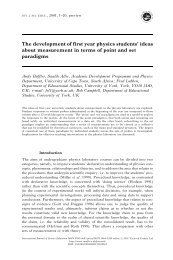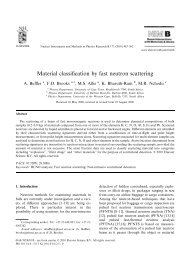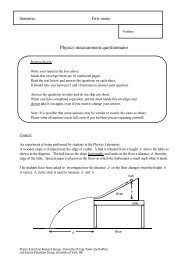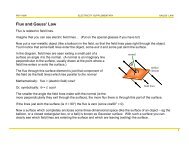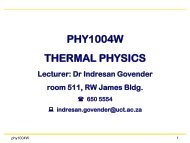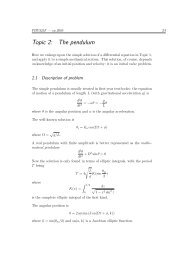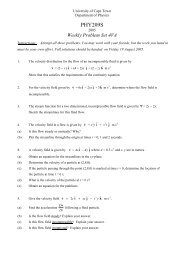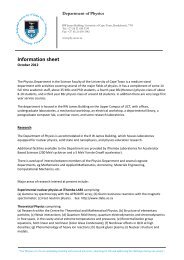Create successful ePaper yourself
Turn your PDF publications into a flip-book with our unique Google optimized e-Paper software.
PHY110W MAGNETISM <strong>MAGNETIC</strong> <strong>FIELDS</strong> <strong>DUE</strong> <strong>TO</strong> <strong>CURRENTS</strong><br />
A CURRENT-CARRYING COIL<br />
AS A <strong>MAGNETIC</strong> DIPOLE<br />
By considering a cross-section<br />
through a current-carrying coil, we<br />
can see why such an arrangement<br />
can be viewed as a magnetic dipole.<br />
i<br />
i out<br />
i in<br />
For a coil of N turns the magnetic<br />
dipole moment was determined to be µ = NiA (29-33)<br />
So the magnetic field along the axis of a currentcarrying<br />
coil can be written as<br />
B x<br />
µ 0µ<br />
=<br />
2π<br />
R + x<br />
(<br />
2 2)<br />
and for large distances x >> R,<br />
µ µ<br />
B x<br />
2π<br />
x<br />
32<br />
0<br />
= (30-29)<br />
3<br />
… which has the identical form to the expression for<br />
the electric field along the axis of an electric dipole:<br />
E<br />
p<br />
= (23-9)<br />
3<br />
2πε0z<br />
A current loop produces a magnetic<br />
field like that of a bar magnet and<br />
thus has north and south poles.<br />
The direction of µ is given by the<br />
right hand curled fingers rule.<br />
S<br />
µ N<br />
17



